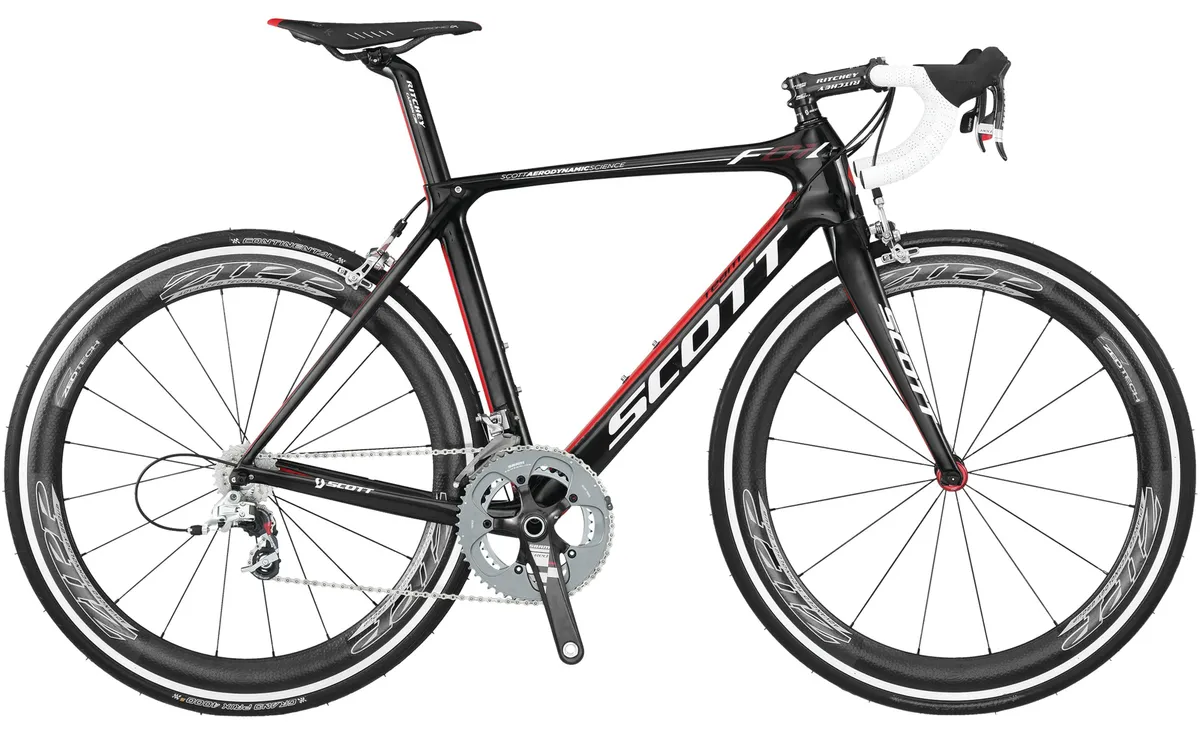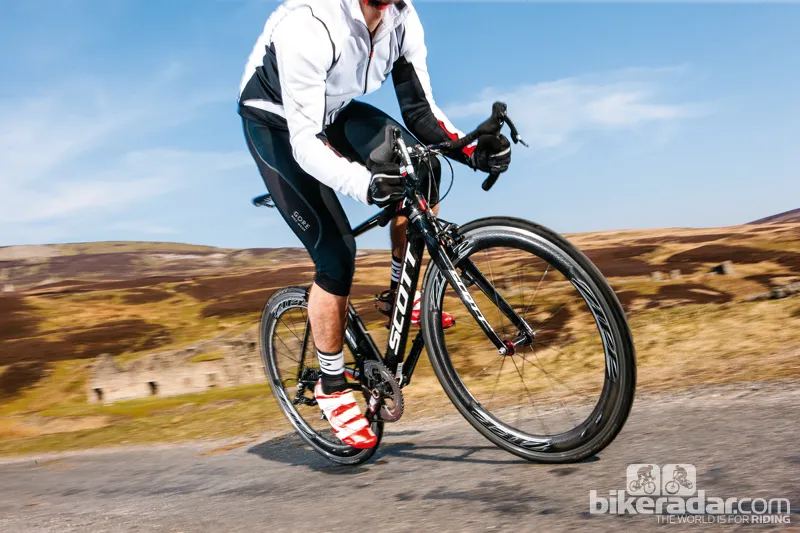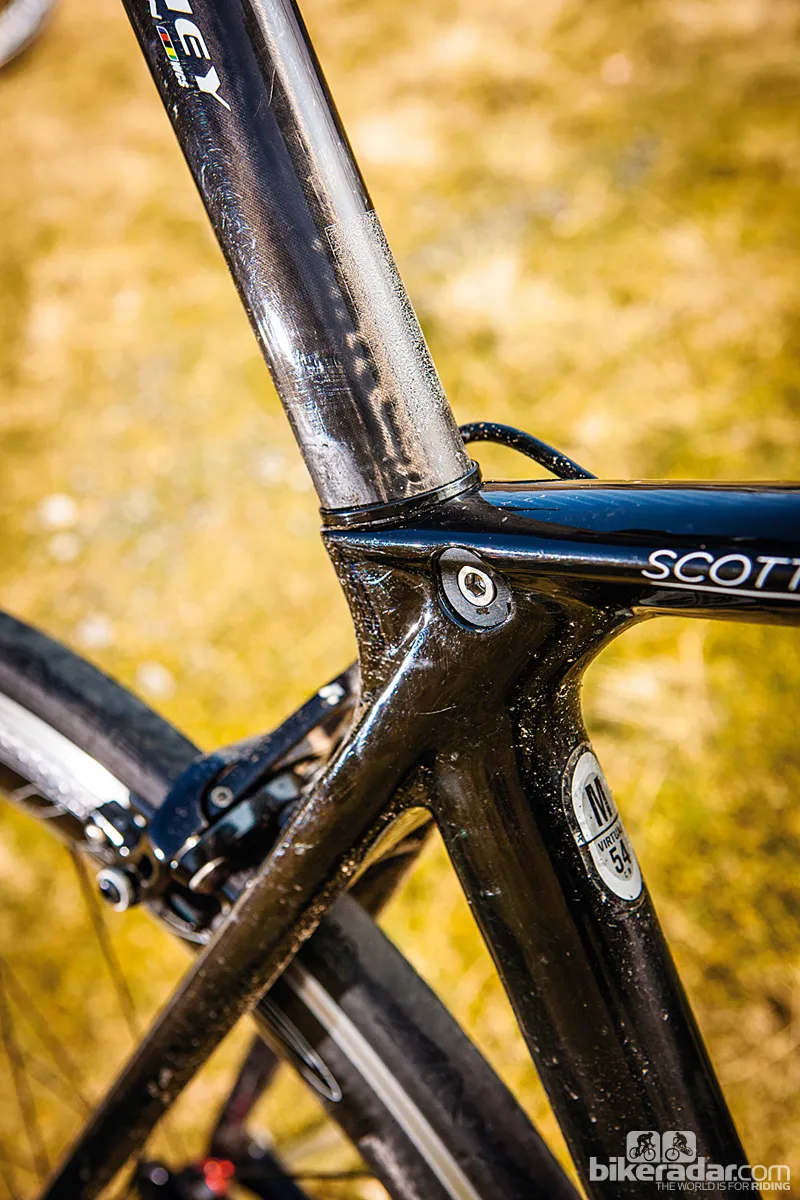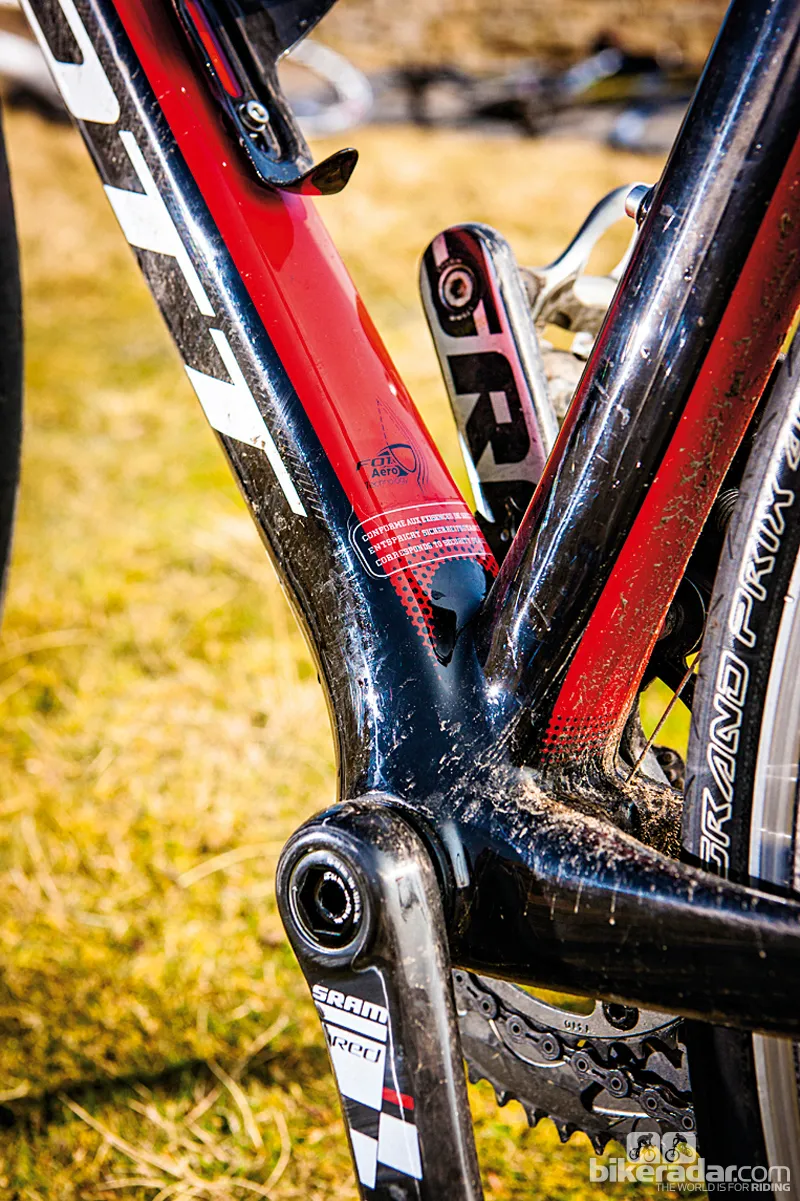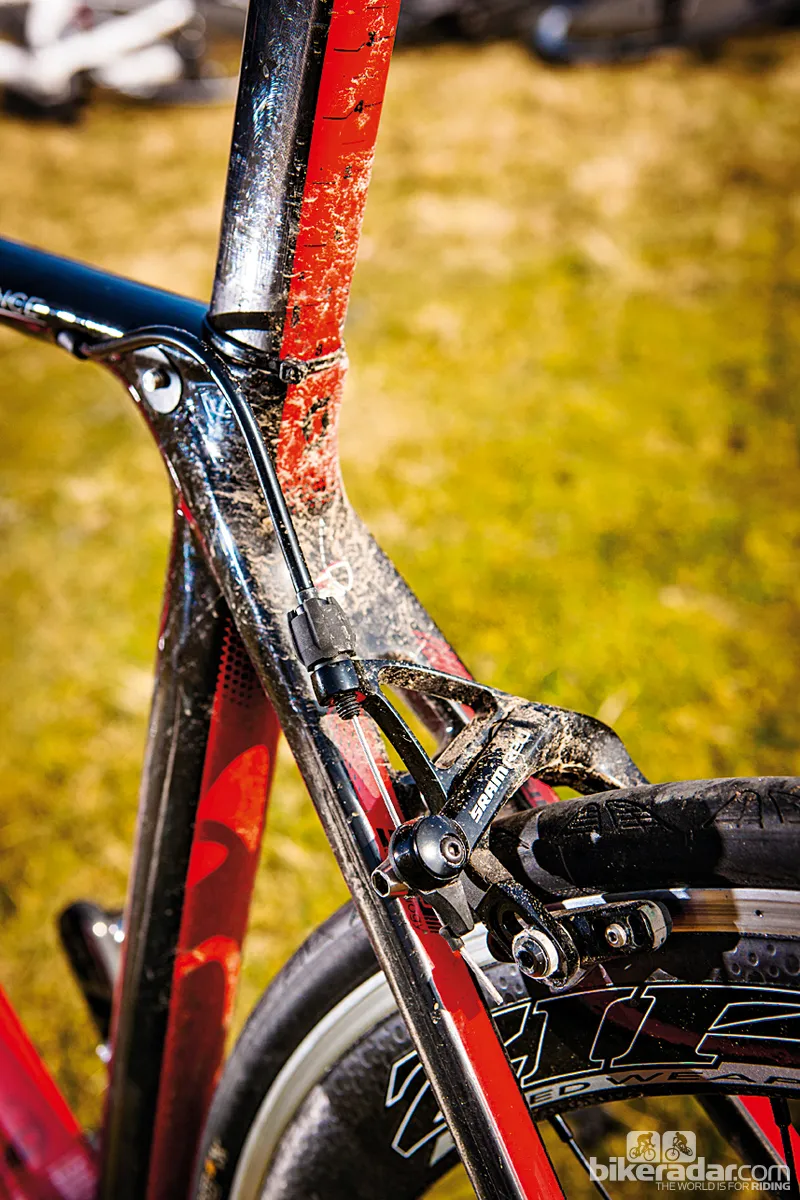Scott’s Foil Team combines state-of-the-art aerodynamics with conventional race bike responsiveness and super-friendly handling. The result is an outstanding all-round performer.
Ride and handling: Responsive and sure-footed for easy speed
It says a lot that Scott stopped selling the very successful but non-aero Addict race bike as soon as they introduced the Foil, especially as every other bike brand that’s launched an aero road bike has kept their conventional model alongside it in the range. That’s because Scott see the Foil as a total all-rounder with aero benefits.
The featherweight frameset means a very light complete bike, which in turn means exceptional climbing performance compared with most aero bikes. While it’s not the stiffest bike in terms of kick or cockpit – and the Zipps take some effort to wind up – it’s still very responsive in the overall scheme of things. The low weight means overall responsiveness is right up there, particularly if there’s a gradient involved. The Foil refuses to be fazed however close together the contour lines get.
The combination of the ‘Virtual Foil’ aerodynamics, stable handling angles and fat rim profile of the Zipp wheels also makes this one of the best-handling bikes we’ve ridden. Even in gusty conditions it holds a line easily and calmly, and when it comes to downhill sections it’s an absolute demon.
Even relatively tentative riders suddenly started dropping down the steepest, twistiest Dales descents as though they were on rails, leaning, carving and grinning away from most determined attempts at pursuit. It’s equally sure-footed through flat corners too, where the neutral handling manners of the wheels really help remove hesitation or tramlining trauma.
While we don’t have any empirical independent wind tunnel results, the Virtual Foil aerodynamic concept certainly seems to work on the road. Coasting side by side on mid-speed descents with similar-sized riders, the Scott kept pace with the other bikes on calm days. Significantly, it started to edge ahead noticeably as soon as the yaw angles increased.
The fact that it doesn’t demand constant steering attention is also a big mental and physical bonus, allowing you to concentrate more on putting speed smoothly through the wheels.
The slim rear stays and Ritchey cockpit also make the Foil relatively smooth for an aerobike. There’s still rattle and clatter on rough surfaces, but not enough to knock your pedaling out of kilter.
Ironman distances are no issue at all in terms of comfort, and its overall handling character and climbing ability is a definite bonus when there’s big elevation involved.
Frame and equipment: From chainstays to wheels, the Foil is aerodynamic
The Foil is designed around the ‘Virtual Foil’ aerodynamic principle. Also known as a Kammtail, this utilises an airflow effect caused when the tail of a teardrop shape is chopped off bluntly. The turbulence behind the blunt face creates a virtual aerofoil shape with smooth boundary airflow. Because it’s a fluid rather than fixed shape, it can also bend in relation to the direction of airflow. This makes it more efficient in sidewinds. It also allows the use of big, structurally efficient thin-wall tubes rather than heavy teardrop shapes, which makes the Foil frame very light for an aero bike.
The Foil fork slots into a full-sized tapered head tube with cables ducking inside just behind it. The big boat-shaped down tube drops down to a press-fit bottom bracket while the top tube tapers away to the seat tube. A very neat internal wedge system clamps the Foil-specific Ritchey seatpost.
Relatively skinny, canted chainstays manage airflow around the rear wheel while the thick seatstays also use a chopped foil section. Internal gear cabling pops out just ahead of the micro-dropouts. The Foil Team also uses Scott’s top-grade HMX Net composite lay-up for maximum stiffness and minimum weight. At well under a kilo the Foil is as light as most conventional road frames and, despite chunky looks, the tapered-top fork is equally featherweight.
As you’d hope for a bike costing over £6,000, there’s no skimping on kit either. SRAM Red doesn’t have the fastest front shift, but it is the lightest complete groupset available, which keeps complete bike weight below 6.8kg. The Ritchey carbon cockpit kit and a carbon fibre-railed Fizik saddle help minimise mass as well as increase comfort thanks to their slight compliance.
While they’re not the latest Firecrest design and they’re not super light, the Zipp 404 wheels handle superbly in a wider range of wind conditions, making them a great match to the frame. The Continental tyres let you take this excellent handling right to the limit in total confidence. The high complete bike price definitely puts the Foil Team well into the aspirational rather than affordable bracket, though.
